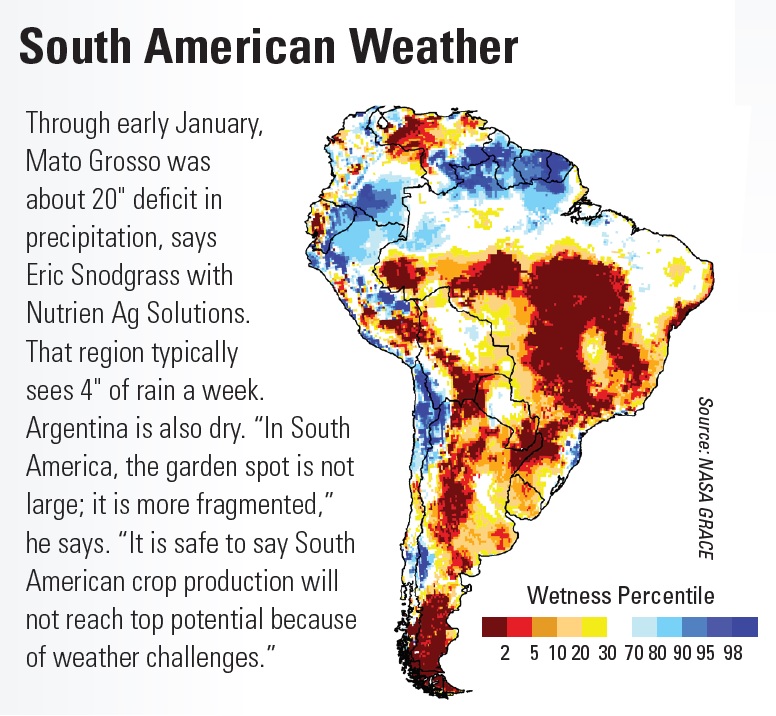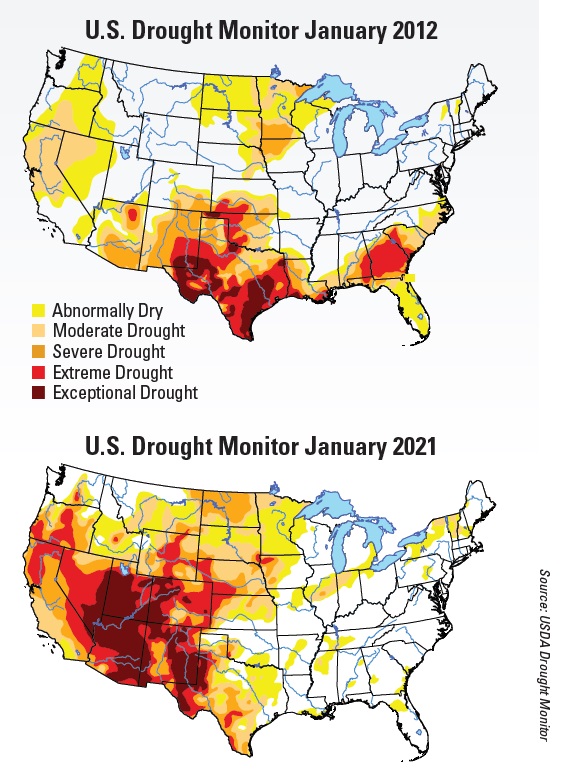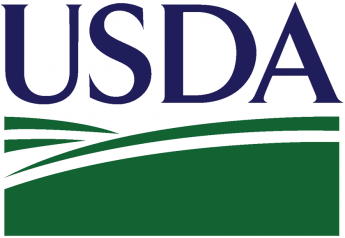Drought Drives Weather Outlook

Could 2021 match the record-dry pattern of 2012?
By Sara Schafer and Tyne Morgan
Spring rains can undo all of winter’s sins. But this winter already has many farmers praying for rain.
“Normally I’m not worried about drought in the winter,” says Eric Snodgrass, principal atmospheric scientist with Nutrien Ag Solutions. “But this year I’m a little more concerned.”
As of early January, around 46% of the U.S. was experiencing moderate drought or worse. The seasonal drought outlook calls for continued dry conditions for nearly all of the western half of the U.S.
“There is a significant risk of drought persisting or even intensifying during the winter of 2020-21 and into the spring of 2021 from southern California to the central and southern Great Plains,” says Brad Rippey, USDA Meteorologist. “By late winter, dryness could become a concern in the lower Southeast. Conversely, the Northwest should experience a wet winter and drought relief. The eastern Corn Belt and the Northeast may also be wet during the winter and early spring.”
La Nina’s impact, which aided to the dryness in the second half of 2020, will likely continue into this year,
“La Niña-driven weather impacts should last through the spring of 2021 – and possibly longer if La Niña does not fade away with the arrival of the warm season,” Rippey says. “Multi-year La Niña episodes have occurred several times, including 2010-12 and 1998-2001.”
Early-year dry conditions in the South and Southeast can be problematic for the Corn Belt, Snodgrass adds.
“From a physical standpoint, any moisture in the mid-section of country will have to traverse over those drier sections, which can lead to a reduction in moisture,” he says. “I will be most concerned if we get into March and haven’t seen drought correction from Texas to Colorado to South Dakota.”
Memories of 2012 Surface
The dryness and growing drought conditions are now sprouting concerns 2021 could produce a similar weather pattern to 2012. But it’s unlikely this year will see the magnitude of the 2012 drought, says Brad Rippey, USDA Meteorologist. His reasoning is two-fold: First, the drought covers much of the western half of the country, but a relatively small area of the Corn Belt. Second, the eastern Corn Belt has a tendency to see a wetter bias with La Niña.
South America Weather

Don’t miss Eric Snodgrass’ preview of 2021 weather at the Top Producer Summit. Register at TPSummit.com.









